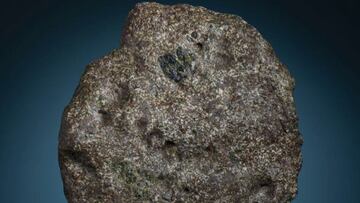Finding 600 kilometers deep in the Earth
A study published in ‘Nature Geoscience’ revealed the presence of water in the Earth’s mantle. The gem was found in the Karowe mine in Botswana.

A diamond originating at a depth of over 600 kilometers (375 miles) and found in the Karowe mine in Botswana, revealed the presence of water in the Earth’s mantle. The findings of a study carried out by the Gemological Institute of America have been recently published by the journal ‘Nature Geoscience’.
In fact, this research detailed the existence of a “water-saturated environment” that extends to the lower mantle of the planet, and which could be useful in understanding the Earth’s deep water cycle. The diamond found in the aforementioned mine in the African country had trapped a sample of the lower mantle from a depth of 660 kilometers from the surface.
Furthermore, the scientists found evidence of the presence of minerals such as ringwoodite, ferropericlase (magnesiowüstite) and enstatite in the gem itself, along with main minerals of the lower mantle and hydrose phases. “The petrological nature of the inclusions indicates that the ringwoodite breaks down into bridgmanite and ferropericlase in a water-saturated environment at the 660km discontinuity,” say the experts.
They also indicated that the peridotite composition and hydric conditions "extend, at least, through the transition zone and into the lower mantle." Ocean water accounts for up to 70% of the total surface of the planet. Precisely the process by which this water can be transported by hydrated minerals in the depths of the Earth, is called the deep water cycle.
These waters could affect both the explosiveness of volcanic eruptions, and seismic activity. However, due to the paucity of natural samples from this depth, the authors noted that the nature of the boundary between the mantle transition zone and the lower mantle - its composition and the volatile fluxes that traverse it - are still under debate. .
More finds at the bottom of the Atlantic Ocean
The presence of a gem from the seabed comes at a key moment for the investigation of objects or materials found on the ocean floor. Last July, US marine scientists discovered a series of holes three kilometers deep in the Charlie-Gibbs Fracture, near the Mid-Atlantic Ridge and the Azores Plateau, in the Atlantic Ocean.





